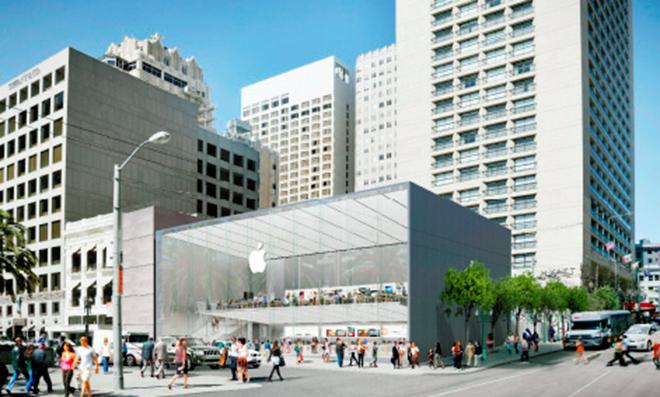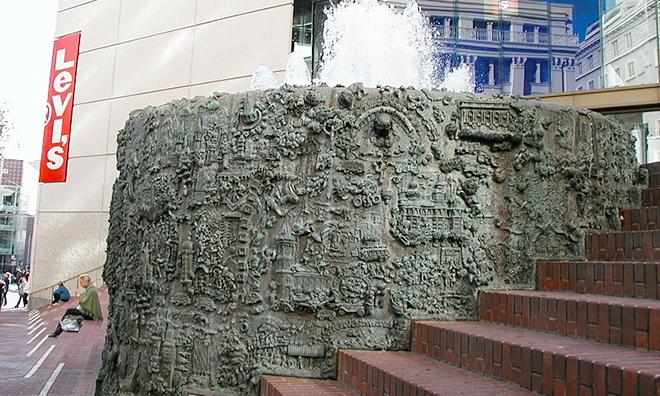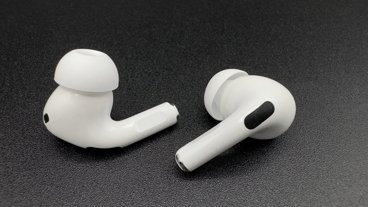Apple may be required to rework its design for a new Union Square flagship store, as San Francisco's Planning Department has reviewed the Cupertino company's plans and found the preliminary proposal wanting.
The Planning Department issued its Preliminary Project Assessment (PDF) on Friday, finding that Apple's proposed design for a some controversy.
The planning board's recommendations advise Apple to "[c]onsider the retention or relocation of the Ruth Asawa fountain as a part of the new reconfigured plaza, perhaps connecting it to, and integrating it with, another water theme within the plaza." Barring that, the assessment calls for Apple to work with the Department "to find an alternative location for its display within the City."
The fountain — a brass installation that has been in place in the plaza near Apple's proposed store for 40 years — displays a map of San Francisco done in stylized relief form. Apple's project first drew criticism when San Francisco Chronicle design critic John King drew attention to the fact that Apple's submitted proposal would displace the local landmark.
Following the initial flap over the fountain, San Francisco mayor Ed Lee backpedaled on his initial praise for Apple's design. Lee subsequently said that the proposal would necessitate a second look, given its potential impact.
Another point of concern for the Planning Department is ensuring that the design of Apple's new store fits in well with the overall look of the area. The Assessment encourages a "contemporary design" — Apple's current plan calls for a minimalist structure with an all-glass facade and a blank rear wall — but it also says that the "overall design and detailing should relate to the established patterns, rhythm and architectural character found within the District."
The Assessment makes a nod to the transparent facade and nontransparent rear wall, but notes that "there are ways of achieving the desired design concept while still responding to the fine-grain scale found within the District." To that end, it calls for the plan to incorporate "increased modulation and definition" in the form of "vertical elements to break the contiguous plane of the glass wall, and/or adding color, pattern or texture to the glass wall."
For the rear facade, the Department advises the inclusion of "a more active, transparent treatment." Apple's current plan would create an 80-foot blank wall along "an important commercial street with high pedestrian volumes in the heart of the City's premier retail district." The Assessment proposes more windows or even a possible rethinking of the blank wall entirely in order to "generate an active zone, thereby tempting tempering the otherwise minimally embellished Stockton Street facade."
Additionally, the Assessment calls for Apple to rethink its approach to the stairway leading into the plaza next to its store. Apple's proposal called for a narrower stairway, but this is in conflict with the open space design principles governing the area. The Assessment recommends that Apple "[m]aintain as wide of a staircase as possible into the plaza, in order to create a more visible, inviting and usable edge along the sidewalk."
When the store was initially proposed, it received solid praise from the city's politicians and some designers. Of particular interest were the potential economic outgrowths from the new store, including 50 new jobs in addition to the 350 currently supported by the Stockton and Ellis Apple store.
 Kevin Bostic
Kevin Bostic








-m.jpg)






 Charles Martin
Charles Martin

 Malcolm Owen
Malcolm Owen
 William Gallagher
William Gallagher

 Christine McKee
Christine McKee
 Wesley Hilliard
Wesley Hilliard









66 Comments
"We'll just give another city our business, then."
"We'll just give another city our business, then."
You are a mind reader. That was my exact response.
Apple to San Francisco: "You'd be lucky to have our business in your city."
You are a mind reader. That was my exact response.
Or better yet board it up and let it sit empty for a couple years while the work on the revisions. These things do take time.
San Francisco's planning department is notorious for meddling and micromanagement until every project is watered down and boring, but this story's headline simply doesn't match the story. That said, thank god for The John King politburo delaying projects and making everything more expensive in order to aggrandize his own inflated sense of importance.
We will see if Apple blinks. Mr. Job's would bend the will of the city to his design without compromising on any major design. I believe however that new management will give in more than even the city expects from Apple. My gut tells me if Apple decides to move forward with that location that they will incorporate most if not all of the recommendations. I get their desire to save the fountain and I think Mr. Job's would have worked it in somehow, but I believe he would convinced everyone involved that the actual store design is exactly what everyone wants and needs for the area. I do not think Mr. Cook can, will or wants that fight.